
Choosing between a prime and a zoom lens is a pivotal decision for lensmen. It affects everything from the style of your shots to the flexibility of your shooting process. In this comprehensive guide, we dive deep into the world of Prime vs Zoom Lens. In addition, we will unravel the mysteries behind each type to help you make an informed decision.
Whether you’re a budding photographer or a seasoned pro, understanding the nuances of prime and zoom lenses is key to elevating your photography.
Stay tuned as we explore the sharpness, versatility, and creative potential of these optical powerhouses.
Table of Contents
Understanding Prime Lenses: Features and Benefits
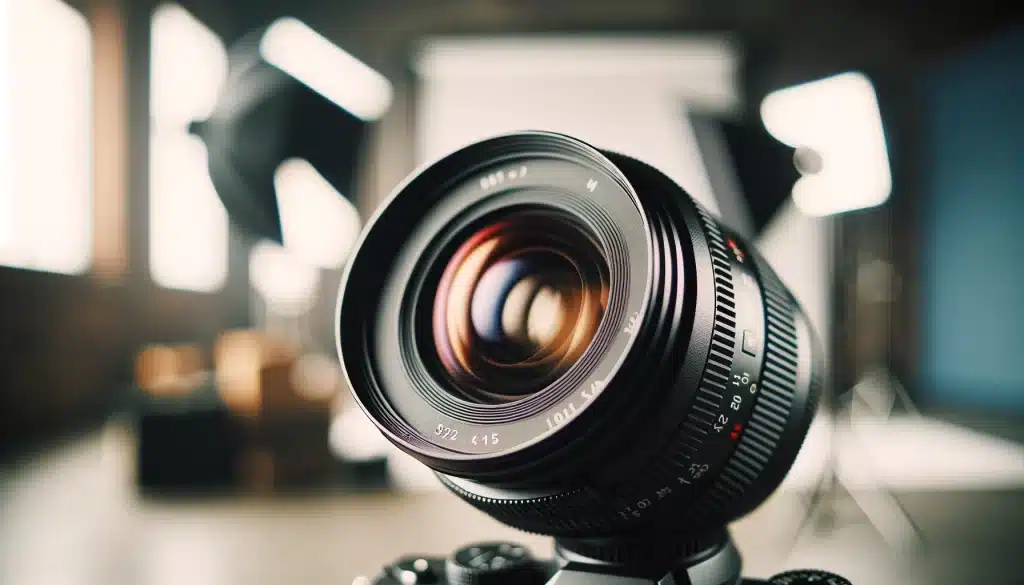
Prime lenses, often smaller and simpler than zoom lenses, offer a variety of advantages for lensmen. These lenses are known for their sharp image standard, wider apertures, and compact size. Thus, making them a favored choice for many photography enthusiasts and professionals alike.
Key Features and Workflow Integration
- Compact and Lightweight: Prime lenses have less mechanical complexity, leading to a more compact and lightweight design. This feature is especially beneficial for lensmen who travel frequently or prefer a less cumbersome setup.
- Sharp Image Quality: With fewer lens elements and a fixed focal length, prime lenses generally produce sharper images with less distortion compared to zoom lenses. This makes them ideal for capturing detailed and high-grade photographs.
- Wide Aperture Range: Prime lenses typically offer wider maximum apertures, allowing more brightness to enter the camera. This is particularly advantageous in low-brightness conditions, enabling lensmen to shoot with faster shutter speeds and lower ISO settings.
- Cost-Effective: Despite their high-grade optics, prime lenses are often more affordable than zoom lenses. This cost-effectiveness makes them an attractive option for lensmen at all levels, especially those on a budget.
Benefits of Using Prime Lenses
- Enhanced Low-Light Performance: The wide apertures of prime lenses are not just for creating a shallow depth of field. They also significantly improve low-brightness shooting capabilities. This allows lensmen to capture clearer and brighter images in dimly lit environments without relying heavily on artificial lighting or high ISO settings, which can introduce noise into the images.
- Creative Control and Bokeh: The ability to shoot with a wide aperture also means prime lenses can produce a beautiful bokeh effect, where the background is artistically blurred, emphasizing the subject and adding a professional standard to the photographs.
- Encourages Creative Composition: The fixed focal length of prime lenses encourages lensmen to move around and explore different angles and compositions, enhancing their creative vision and potentially leading to more dynamic and engaging shots.
Exploring Zoom Lenses: Features and Benefits
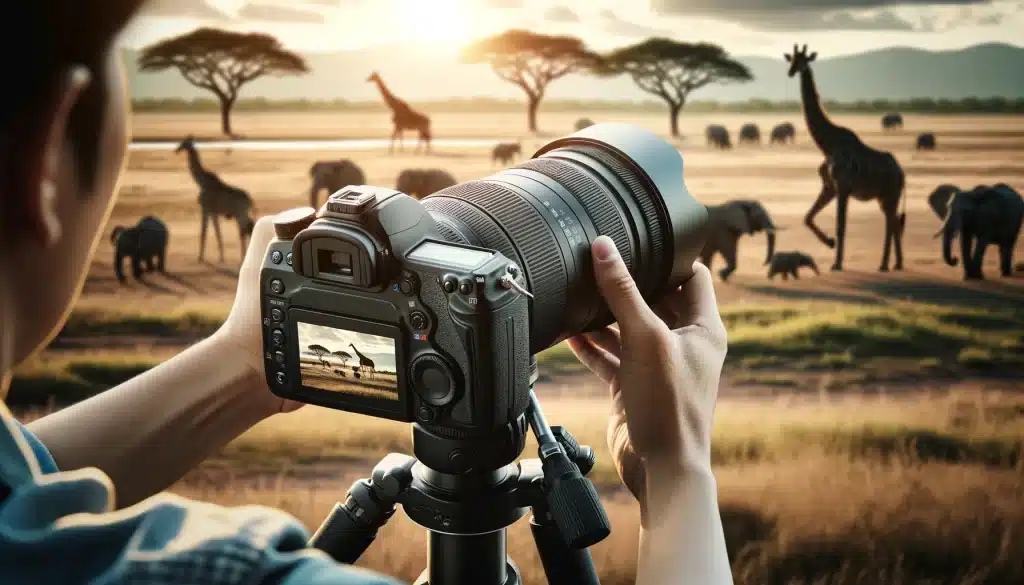
Zoom lenses are celebrated for their adaptability and versatility in various photographic scenarios. Unlike prime lenses, zoom lenses offer a range of focal lengths. Thus, making them ideal for lensmen who need to quickly adjust their composition without changing their physical position or lens.
Zoom Lens Features
- Versatile Focal Lengths: Zoom lenses come in a wide variety of focal ranges, from ultra-wide to super-telephoto, catering to diverse photographic needs. Common focal lengths include 24-70mm, 70-200mm, and even extensive ranges like 18-300mm.
- Convenience and Speed: They enable rapid framing adjustments and offer the flexibility to capture different aspects of a scene without physically moving, which is crucial in dynamic environments like wildlife photography.
- Compact and Lightweight Options: Modern zoom lenses are more compact and lighter than their predecessors, enhancing portability and ease of use during extended shooting sessions.
Benefits of Using Zoom Lenses
- Enhanced Flexibility: Zoom lenses allow lensmen to experiment with various compositions in a single scene, making them particularly useful for capturing unexpected moments or when working from a safe distance is necessary.
- Cost-Effective Solution: While professional zoom lenses will be expensive, they often negate the need to purchase multiple prime lenses covering different focal lengths, potentially offering a more economical solution for covering a broad range of focal lengths.
- Diverse Photographic Opportunities: With the ability to cover wide-angle to telephoto perspectives, zoom lenses are suited for a myriad of photographic genres, from landscapes and wildlife to events and travel photography.
Comparative Analysis: Prime vs Zoom Lens in Photography
| Feature | Prime Lens | Zoom Lens |
|---|---|---|
| Focal Length | Fixed, requiring physical movement for composition change | Variable, allowing for flexible framing without moving |
| Aperture | Generally wider, allowing more brightness and shallow depth of field | Often variable, with some models offering fixed apertures at the cost of zoom range |
| Image Quality | Sharper images with less distortion due to simpler optics | Can vary; often softer at extreme focal lengths, though high-grade models are comparable to primes |
| Size and Weight | Compact and lighter, making them easy to carry | Often larger and heavier due to complex mechanisms |
| Versatility | Limited to one perspective, enhancing creative constraint | Highly versatile, covering wide-angle to telephoto ranges in one lens |
| Price | Can be more affordable while offering high standard | Can be expensive, but replaces the need for multiple prime lenses |
| Ideal Use | Specific photographic styles or conditions requiring a particular focal length | Situations requiring flexibility and quick adjustments without lens changes |
Prime Lenses in Detail: Optics, Aperture, and Performance
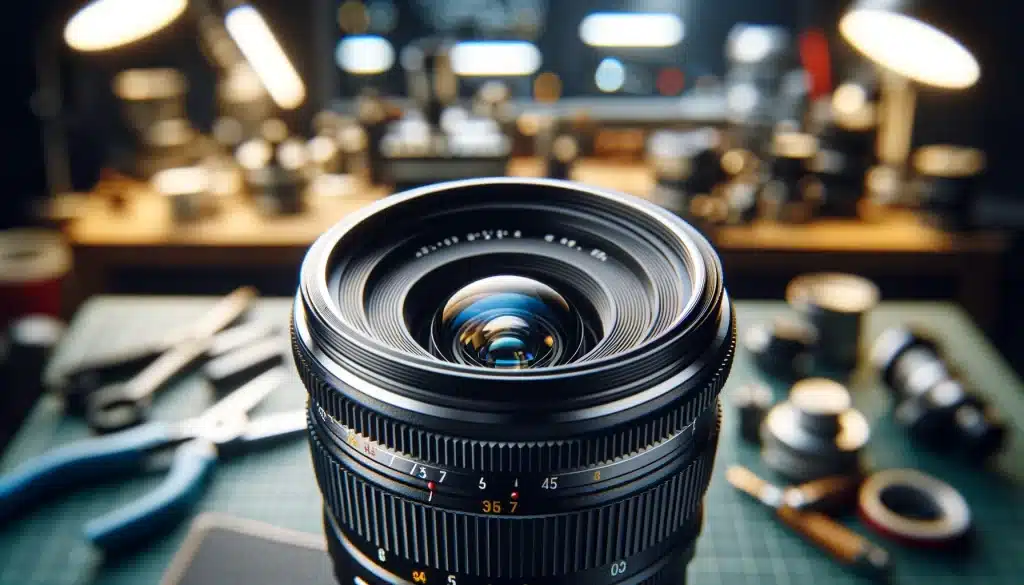
Prime lenses offer distinct optical advantages, largely due to their fixed focal length. This design allows each lens to be optimized for specific settings, resulting in sharp, high-quality images across the frame. Here’s a detailed look at the aspects of prime lenses that make them stand out in the world of photography.
Optics: Clarity and Sharpness
- Fixed Focal Length Advantage: A prime lens's fixed focal length means that its optics can be finely tuned for that specific length, enhancing image clarity and sharpness, especially at the edges and corners of the frame.
- Specialty Features: Some prime lenses include advanced features like tilt-shift or defocus control, catering to specialized photography needs like architectural and portrait photography.
Aperture: Low Brightness and Depth of Field
- Fast Aperture: Prime lenses generally have wider apertures (lower f-numbers), such as f/1.2 to f/2.8, allowing more brightness to hit the sensor, which improves low-brightness performance and enables a shallower depth of field for that sought-after bokeh effect.
- Creative Control: The wide aperture of prime lenses not only facilitates shooting in dim conditions but also provides more control over the depth of field. This allows lensmen to isolate subjects from the background, creating images with a dramatic focus on the subject against a smoothly blurred backdrop.
Performance: Handling and Cost-Effectiveness
- Size and Weight: Prime lenses are typically smaller and lighter than zoom lenses, offering ease of use, especially for lensmen who are on the move or prefer less bulky equipment.
- Affordability: With a simpler construction and fewer lens elements, prime lenses often come at a lower price point than zoom lenses, offering a cost-effective solution for lensmen looking to achieve high-grade images without a significant investment.
Versatility and Usage
- Range of Focal Lengths: Despite their fixed focal length, prime lenses are available in a wide range, from ultra-wide to telephoto, each suited for different types of photography like landscapes, portraits, or macro photography.
- Enhanced Learning and Creativity: The constraint of a fixed focal length encourages photographers to explore different perspectives and compositions, fostering creativity and a deeper understanding of framing and photographic techniques.
Zoom Lenses Explained: Mechanics, Range, and Quality
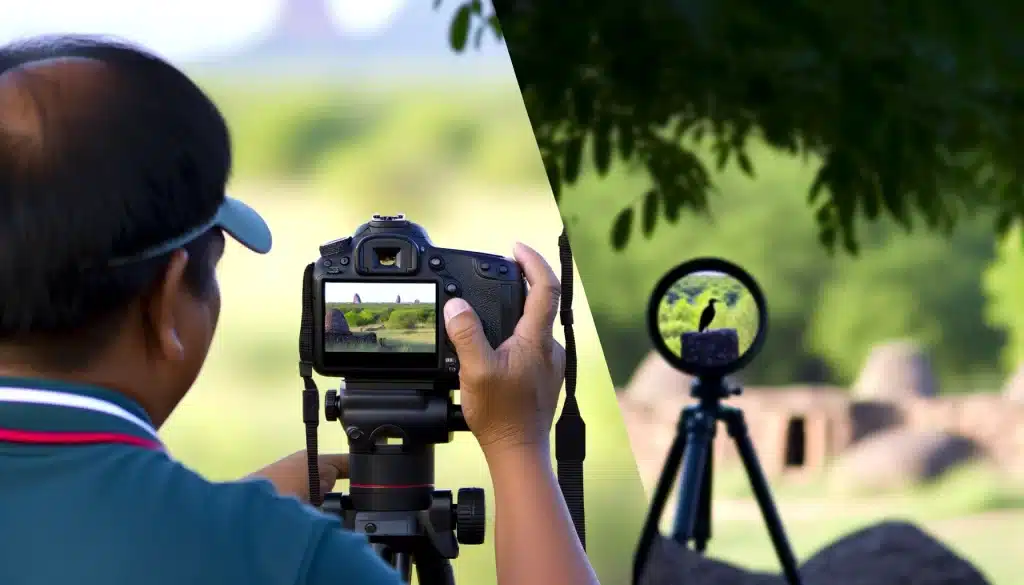
They are an integral part of photography and filmmaking, offering versatility and convenience that prime lenses cannot match. Their ability to cover a range of focal lengths makes them a popular choice for various shooting situations.
Mechanics of Zoom Lenses
They consist of multiple lens elements that move relative to each other to change the focal length and, consequently, the field of view. This mechanical complexity allows photographers to capture subjects at different distances without physically moving closer or further away. The internal mechanism includes a series of gears or motors, especially in higher-end models, facilitating smooth transitions throughout the zoom range.
Range of Focal Lengths
- 24-70mm: Ideal for general photography, covering wide to short telephoto perspectives.
- 70-200mm: Suited for portraits and close-range sports photography.
- 18-300mm: Offers an extensive range from wide-angle to super-telephoto, suitable for travelers or those who prefer one lens for all purposes.
Image Quality and Performance
While they offer unparalleled flexibility, they sometimes compromise on image sharpness, especially at extreme focal lengths. The debate of prime vs zoom lens often comes down to the specific requirements of the photographer, such as the need for lightweight equipment, low-brightness performance, or the convenience of having multiple focal lengths in one lens.
Professional Use: Prime vs Zoom Lens in Different Genres
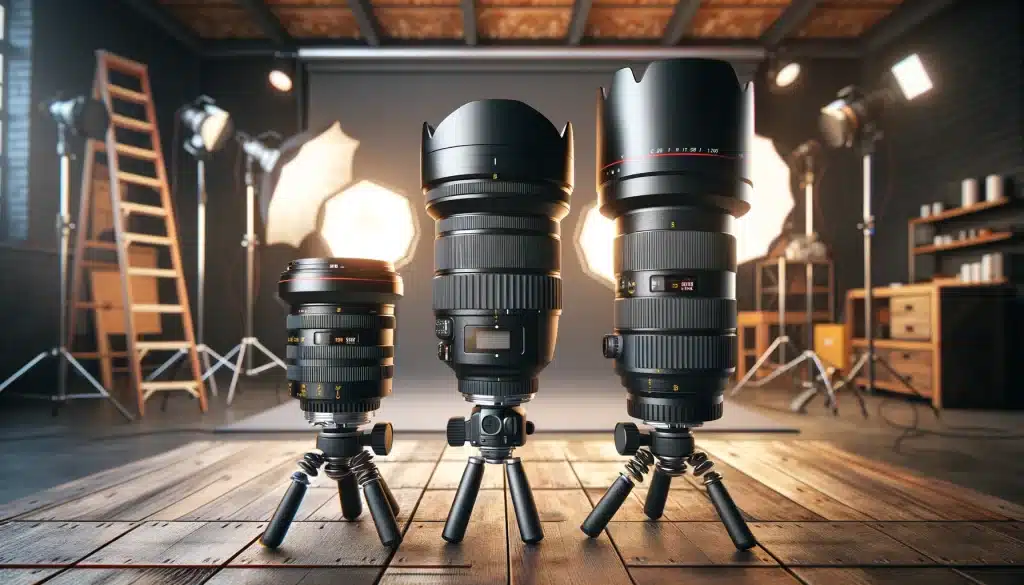
In professional photography, the choice can significantly impact the standard and style of the images produced. Here’s how these lenses fare across different photography genres, considering the characteristics of Canon lenses and technologies like USM (Ultrasonic Motor) and STM (Stepping Motor).
Portrait Photography
- Prime Lenses: Known for their large apertures, prime lenses like the Canon RF 85mm F1.2L USM provide shallow depth of field, creating beautiful bokeh and making subjects stand out sharply against blurred backgrounds. The fast apertures (e.g., f/1.2 or f/1.8) allow for precise control over depth of field and excellent low-light performance.
- Zoom Lenses: While zoom lenses offer versatility, they may not achieve the same level of background separation and bokeh as primes. However, high-quality zooms like the Canon RF 24-70mm F2.8L IS USM can still be used effectively for portraits, especially when the photographer needs to quickly adapt to changing scenes or distances.
Wildlife and Sports Photography
- Prime Lenses: Long prime lenses, such as the 500mm f/4, are preferred for their sharpness and fast aperture, crucial for capturing distant, fast-moving subjects with clarity and speed.
- Zoom Lenses: Telephoto zoom lenses like the Canon RF 100-500mm L series offer flexibility to photographers who need to rapidly change framing and focal length without changing their position, which is invaluable in dynamic and unpredictable environments.
Landscape Photography
- Prime Lenses: Wide-angle prime lenses, such as the Canon RF 35mm F1.8 MACRO IS STM, are popular for landscape photography due to their ability to capture expansive scenes with great detail and clarity.
- Zoom Lenses: Wide to telephoto zoom lenses provide the adaptability to frame various aspects of the landscape, from vast panoramas to focused details, making them a convenient choice for photographers who prefer to carry less gear.
Frequently Asked Questions about Prime vs Zoom Lens
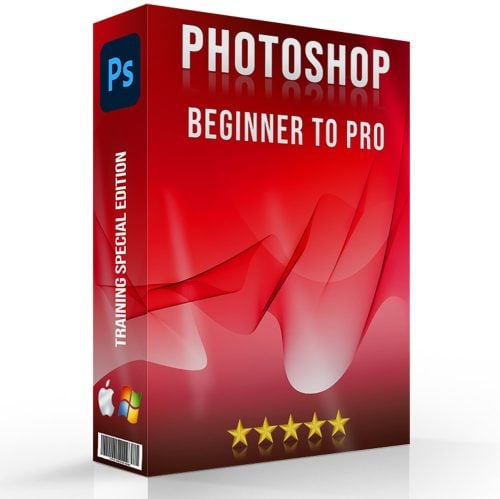
Is a prime lens better than a zoom?
A prime lens can be better for situations where maximum image grade, larger apertures, and lighter weight are important, such as portrait photography. However, zoom lenses offer greater flexibility and range, making them ideal for various shooting conditions.
Can you still zoom with a prime lens?
No, you cannot zoom with a prime lens because it has a fixed focal length. To change your composition or get closer to your subject, you will have to physically move closer or farther away.
Which is better for filmmaking, zoom or prime lens?
For filmmaking, the choice depends on the project’s needs. Prime lenses often provide superior image quality and a wider aperture, ideal for low brightness and depth of field control. However, zoom lenses offer more flexibility to quickly change framing without swapping lenses, which can be crucial in dynamic shooting environments.
What is the difference between prime lens and zoom lens portrait?
In portrait photography, prime lenses typically offer wider apertures, allowing for a shallow depth of field and beautiful bokeh, making the model stand out in the photos. Zoom lenses, while more versatile, might not provide the same level of background blur or low-light performance as primes but can be more convenient for capturing various compositions quickly.
Wrapping Up the Prime Vs Zoom Lens Debate

In my experience, the choice between a prime and a zoom lens largely depends on the shooting context. For portrait sessions where I prioritize bokeh and sharpness, my prime lens is unbeatable. However, when covering events where subjects and scenes rapidly change, zoom lenses are indispensable for their versatility. The best lens will always be the one that meets the demands of the moment, complementing the camera’s capabilities.
For those eager to delve deeper into the world of photography and master both prime and zoom lenses, our comprehensive Photoshop and Lightroom courses provide the knowledge and skills necessary to elevate your photographic art. Join us and discover how to harness the full potential of your camera and lenses, ensuring you capture the best photos in every situation.
Looking for another heavy comparison? Read the differences between Lightroom and On1 Photo Editor today!
If the “Prime vs Zoom Lens” article has helped you, then Like and Share it with your friends!
Have a nice photoshoot!
Read more about: Photography Techniques
Course
Light Effect Photoshop
Lightroom Course 2024
Adobe Photoshop Course
Photo Editing Course
Get the latest version of Photoshop & Lightroom













